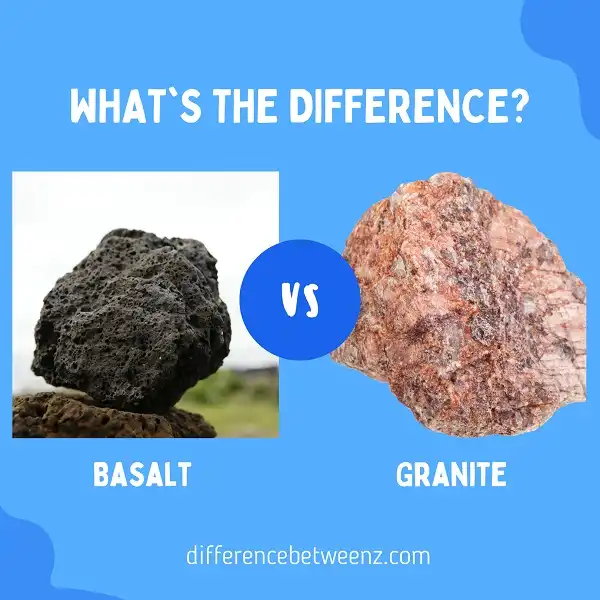Do you know the difference between basalt and granite? Both of these rocks are two of the most common igneous rocks that make up a large portion of Earth’s crust, and yet many people don’t differentiate between them. By having an understanding of both basalt and granite, we can gain insight into the processes which form and shape our planet. In this blog post, we’ll explore their origins, physical properties, uses in construction and landscaping, as well as other interesting facts. Read on to learn more about these amazing geological features!
What is Basalt?
- Basalt is an igneous rock that forms when magma cools relatively quickly near the Earth’s surface. Basalt is widely distributed throughout the world, mainly found in areas of oceanic crust and along mid-ocean ridges. Basalt has a dark color due to its high iron and magnesium content, but also can be red or grayish depending on its mineralogy and chemistries.
- Basalt is used in many industries, such as in construction, asphalt, and cement aggregates. Basalt is also used by artisans to create sculptures and vessels, making it a popular material for the artwork.
- Basalt’s unique properties make it an important part of our natural environment, highlighting its lasting tenacity while acting as both an aesthetically pleasing element in artwork and a versatile material for modern industry.
What is Granite?
Granite is a common type of magmatic rock which is composed mainly of grains of quartz and feldspar. Granite is formed when molten magma cools down very slowly beneath the Earth’s surface, forming its incredibly strong layers. Granite has long been favored for its durability and versatility, making it the best choice for kitchen countertops, outdoor patios and walkways, curbing, fireplaces and many other uses. Granite is also well known for being unique in its flaking pattern; no two pieces are exactly alike. Granite has become a popular manner of adding color and life to surfaces both inside and out of our homes.
Difference between Basalt and Granite
Basalt and granite are two of the most iconic types of rocks in geology, but what makes them different? Basalt is an igneous rock that is usually dark-colored and has a rough texture. It forms when magma rises to the Earth’s surface and then cools quickly.
- Granite, on the other hand, is a lighter-colored rock than Basalt with a grained structure. It forms when molten magma stays underground or evaporates slowly over millions of years, allowing it to solidify into crystals of quartz, feldspar, and mica.
- Basalt can be found in areas where hot lava has cooled quickly, such as volcanoes and oceanic crusts, while granite can be found in mountain ranges around the world because it slowly cooled to form rocks deep beneath the ground over hundreds of millions of years.
- Though Basalt and Granite have quite different appearances due to their formation processes and compositions, they share similarities that make them invaluable as building materials: they are durable, hard to break down physically, easy to find in great quantity and relatively inexpensive compared to other common construction options like steel or concrete.
Conclusion
In summary, the main differences between basalt and granite are their composition, color, hardness, heat resistance and durability. Basalt is a dark-colored igneous rock which is composed mainly of plagioclase and pyroxene minerals. Its name comes from the Latin word for ‘very hard stone’. Granite is an intrusive igneous rock with large crystals that form a light-colored granite. It has many uses including countertops, flooring and construction material.


